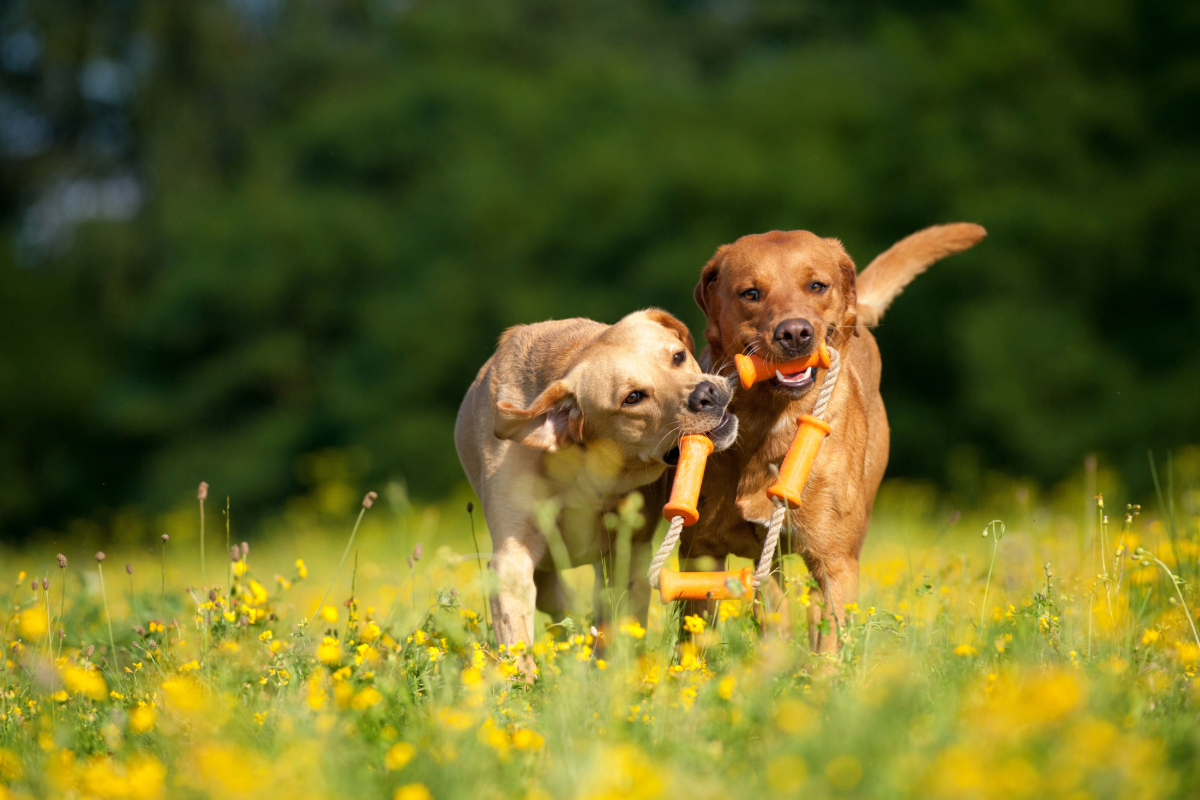Having a dog at home is often synonymous with happiness and company. However, when it comes to adopting a second, the situation can become more complex. Although two dogs can keep each other together, this is not without drawbacks. From budget to logistical constraints, to management of animal relations, every aspect of this cohabitation must be carefully assessed. This article will help you understand the potential challenges associated with the adoption of two dogs, in order to make a thoughtful and adapted choice to your lifestyle.
The financial cost doubled with two dogs
Adopting a second dog inevitably leads to a significant increase in daily and annual expenses. Food already represents a substantial budget for one dog, but this double cost with two animals. Depending on size and race, a bag of quality croquettes can cost between 40 and 80 euros per month, i.e. an annual budget of 500 to 1,000 euros per dog. With two dogs, this can reach up to 2,000 euros per year only for food.
Veterinary care is also a major expenditure item. Between vaccines, pest treatments, regular consultations and emergency care, costs can vary between 200 and 500 euros per year for a healthy dog. In case of illness or accident, the bill can quickly increase, especially with two dogs. Underwriting animal health insurance is an option to limit unforeseen expenses, but it also represents an additional monthly expense of 30 to 50 euros per dog.
Other costs must be taken into account, such as the purchase of equipment (washers, necklaces, baskets), grooming costs for certain breeds, as well as any childcare expenses during holidays. All of this contributes to a significant increase in the family budget, which requires careful financial planning before a second dog can be accommodated.
Logistics challenges with two dogs
Having two dogs at home also involves a more complex daily management, especially in logistics. Walks, for example, can become a real puzzle if the two dogs do not have the same exercise needs or if they do not work well on a leash. Protracting two dogs simultaneously requires special attention to avoid leash tangles or unruly behavior.
Car travel is also more complicated. If a single dog can easily settle on the back seat or in a small transport box, two dogs require more space and specific equipment to ensure their safety. Safety harnesses, separation grids or larger transport boxes may represent an additional investment.
Holidays and weekends also become more difficult to organize. Finding accommodation that accepts two dogs is not always simple, and the cost of care increases accordingly. Pet pensions often charge per unit, and foster families or pet-sitters may also charge a double rate. In addition, some activities or sightseeing tours are not suitable for two dogs, thus limiting the options for trips or trips.
Finally, even on a daily basis, practical aspects such as the organisation of meals or the management of visits to the veterinarian require more preparation. The adoption of a second dog therefore requires a good anticipation of all these logistical constraints to avoid stress and unforeseen events.
Managing the relationship between two dogs at home
When two dogs live under the same roof, managing their relationship becomes a central part of everyday life. Each dog has a unique temperament, and it is not uncommon for tensions to occur, especially at the beginning. Conflicts can erupt around precious resources such as food, toys or even the owner's attention. A more dominant dog could prevent the other from accessing its bowl or resting space, which could lead to stress and problematic behaviour.
It is crucial to assess the compatibility of both dogs before adoption. If one is very energetic and the other quieter, it can be difficult to meet everyone's needs without creating frustration. Some dogs may also display jealousy, especially if the newcomer attracts more attention. To avoid these problems, it is recommended to carefully prepare the arrival of the second dog by following progressive steps: to present the dogs on a neutral terrain, to provide separate spaces at the beginning and to carefully monitor their interactions.
Using a canine behaviorist can be useful if there are signs of rivalry or aggressiveness. This professional can help establish clear rules and a positive dynamic between the two dogs. In addition, giving each dog individual moments with their master, in walks or games, helps to build confidence and reduce tensions.
Anticipate future needs of your dogs
Adoption of a second dog requires not only thinking about the moment, but also anticipating the future needs of each animal. As dogs age at different rates, their demands also evolve over time. For example, an energetic young dog will require long walks and active games, while an older dog may prefer shorter and quieter walks. This difference in pace can create imbalances in the day-to-day management of activities.
Dog health is also a key factor to consider. A senior dog can develop chronic diseases or mobility problems, requiring specific care or expensive treatments. This can complicate cohabitation if the other dog stays in good shape and still needs a lot of exercise and mental stimulation. Adapting daily life to meet the needs of everyone requires time and organization.
To better understand the changing needs of dogs over time, it may be useful to consult specialized resources such as Animals of the future, a generalist site that addresses various aspects of animal behaviour and specific needs according to age or race. Projecting over the long term better anticipates the practical and financial constraints associated with the cohabitation of two dogs, while ensuring their long-term well-being.
Another point not to be overlooked is the emotional impact on dogs. If one of them disappears before the other, the remaining dog may suffer from loneliness or depression. Anticipating this possibility, by creating a socialization network with other dogs or maintaining a stable routine, helps to better manage this delicate period.
Time and energy required for two dogs
Having two dogs at home means spending more time and energy on their daily well-being. Every dog needs regular walks, games, education and individual attention. If only one dog may already require several hours of daily care, two dogs increase these needs. It is important to allow time for each activity, so that each animal feels valued and stimulated.
Education is another demanding aspect. If the two dogs do not have the same level of obedience, separate training may be required. This makes it possible to adapt the exercises to the specific needs of each dog, without creating confusion or frustration. For example, if one of the dogs is still learning cleanliness or basic commands, this will require constant vigilance and repetition, while the other may require more advanced exercises.
Sharing attention is also crucial to avoid jealousy and unwanted behavior. If a dog feels neglected, it could develop behavioural disorders, such as destruction, excessive barking or runaways. Offering special moments to every dog, whether on individual walks or on one-on-one games, helps balance interactions and strengthen relationships with each other.
The energy needed to maintain harmony between two dogs should not be underestimated. Physical activities, daily care (brushing, grooming, cleaning) and behaviour management require constant involvement. For owners with a busy schedule, this requirement can quickly become a challenge. Before adopting a second dog, it is therefore essential to objectively assess the time available and the ability to meet these needs without creating an imbalance.
The impact of two dogs on your home
Adoption of a second dog changes the organization of your living space. Two dogs require more space, whether for sleeping, bowls or accessories. In an apartment, it can quickly create a feeling of overcrowding. Each dog must have its own resting area, ideally in a quiet place where it can withdraw to feel safe. If this space is not respected, tensions may arise between dogs.
The daily with two dogs also generates more cleaning and maintenance. Hair, odours and small dirt brought from outside are increasing, which requires a more rigorous cleaning routine. Floors, carpets, sofas and textiles can be used more quickly or stained, requiring practical solutions such as washable covers or vacuum cleaners suitable for animal hair.
Material damage is also more likely. Even if your dogs are well educated, two playful animals can cause domestic accidents. Reversed objects, chewed furniture or scratched doors are some of the risks to be anticipated. Protecting certain sensitive areas or sheltering fragile objects can help minimize these inconveniences.
If you have a garden, the impact is also visible outside. Two dogs playing or digging can quickly damage a lawn or flowerbed. Designing a special corner for dogs with gravel or slabs can help preserve your green spaces while offering dogs a safe place to spend their energy.





